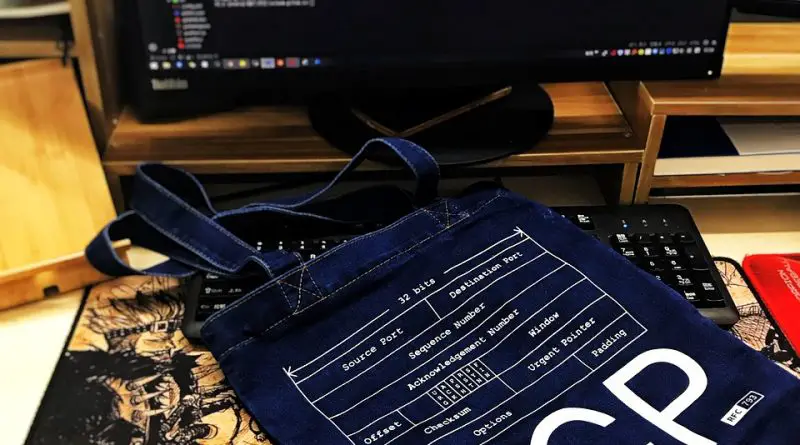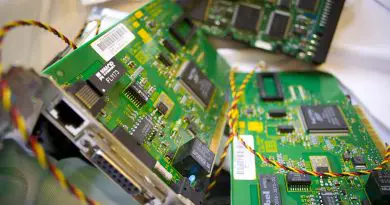Computer Network – Transmission Control Protocol/Internet Protocol (TCP/IP) Reference Model
In the previous post we have seen a complete overview of the OSI reference model along with all its different layers. Now we will see the next important reference model i.e. TCP/IP reference model.This is a short form of Transmission Control Protocol and Internet Protocol .
This is the other reference model which was used earlier by ARPANET(research network sponsored by the U.S. Department of Defence) and then it is being used on the internet.
If we simply compare both the reference models, we can say that host-to-network layer is equivalent to the combination of the physical and data link layers and the internet layer is corresponding to the network layer.
The application layer is roughly doing the job of the session, presentation, and application layers with the transport layer in TCP/IP taking care of part of the responsibilities of the session layer.
The inclusion of satellite network can not be handled by the existing protocols at that time. So a new reference architecture was needed. The new architecture is known as TCP/IP reference model due to the use of the two protocols TCP and IP.
Introduction to TCP/IP
TCP/IP is a hierarchical protocol and the term hierarchical means that each upper-level protocol will be supported by one or more lower-level protocols. The Internet protocol is like any other communication protocol is a set of rules which will govern every possible communication over the internet.
The two protocols (TCP and IP) describe the movement of data between the host computer on the internet. In the transport layer, TCP/IP defines three protocols i.e. Transmission Control Protocol (TCP), User Datagram Protocol (UDP), and Stream Control Transmission Protocol (SCTP)(all these separate protocols will be covered in the subsequent posts).
Moreover in the network layer, the main protocol defined by TCP/IP is the Internetworking Protocol (IP).
In the TCP/IP protocol suite,there are various layers with each layer being responsible for different kinds of communication. TCP/IP offers a simple naming and addressing scheme whereby different resources on Internet can be easily located. Information on internet is carried in “Packets”.
The IP Protocol is used to put a message into a “Packets”.Each packet has the address of the senders and the recipient’s address. These addresses are known as the IP address. Using the TCP protocol ,a single large message is divided into a sequence of packets and each is put into IP packets.
The packets are passed from one network to another until they reach their destination. At the destination, the TCP software reassembles the packets into a complete message.It is not necessary for all the packets in a single message to take the same route each time it is sent.
Overview of the TCP/IP model architecture
Transmission Control Protocol and the Internet Protocol(TCP/IP)was developed by the Department Of defense’s Projects Research Agency(ARPA, later DARPA) under its project on network interconnection. TCP/IP is the most widely used protocol for interconnecting computers and it is the protocol of the internet.
| OSI Model | TCP/IP Model | |
| Application | Application | |
| Presentation | These two layers absent in TCP/IP |
|
| Session | ||
| Transport | Transport | |
| Network | Internet | |
| Data Link | Host to Network | |
| Physical |
With the development of the Hypertext Transfer Protocol (HTTP)for sharing Hypertext Markup Language(HTML) documents freely on the internet,the World Wide Web(WWW) was born, and soon TCP/IP came into much use. In fig you can see the TCP/IP reference model along with the OSI model used for comparison.
Description of TCP/IP Model:
Internet Layer :
This layer is called the internet layer(or the internetworking layer) and it holds the whole architecture together.
The task of this layer is to allow the host to insert packets into any network and then make them travel independently to the destination.
It uses four supporting protocols: ARP, RARP, ICMP, and IGMP (all these protocols explained in greater detail in later posts).
Internetworking protocol(IP) is an unreliable and connectionless protocol delivery service. IP provides no error checking or tracking. It will assumes the unreliability of the underlying layers and does its best to get a transmission through to its destination, but it offers no guarantee of service.
The Address Resolution Protocol (ARP) is used to associate a logical address with a physical address(with the help of Network interface card)
Reverse Address Resolution Protocol (RARP) allows any host to discover its Internet address when it has only its physical address.
The Internet Control Message Protocol (ICMP) is a mechanism used by hosts and gateways to send notifications of datagram problems back to the sender.
The Internet Group Message Protocol (IGMP) is used to facilitate the simultaneous transmission of a message to a group of recipients.
The order in which the packets are received can be different from the sequence in which they were sent.
The internet layer defines (specifies) a packet format and a protocol called internet protocol(IP)
So routing of packets and congestion control are important issues related to this layer.
TCP/IP internet layer is very similar to the network layer in OSI model as shown above.
Transport Layer :
This layer allows the peer entities of the source and destination machines to converse with each other.
The end to end protocols used here is TCP and UDP (user datagram protocol).
TCP is a reliable connections oriented protocol. It allows a byte stream transmitted from one machine to be delivered to the other machine without introducing any errors.
TCP is a reliable stream transport protocol. The term stream, in this context, means connection-oriented.
UDP(User datagram protocol) is the second protocol used in the transport layer . UDP and TCP are transport layer protocols responsible for the delivery of a message from a process (running program) to another process.
It is an unreliable , connectionless protocol and used for the applications which do not want the TCP’s sequencing or flow control.
UDP is a process-to-process protocol that adds only port addresses, checksum error control, and length information to the data from the upper layer
UDP is also preferred over TCP in those applications in which prompt is more important than accurate delivery.It is used in transmitting speech or video.
Application Layer:
TCP/IP model does not have session or presentation layers, because they of little importance in most applications.
The application layer in TCP/IP is equivalent to the combined session, presentation, and application layers in the OSI model.
The protocols related to this layer are all high-level protocols such as virtual terminal (TELNET) file transfer(FTP) and electronic mail(SMTP) (all these protocols will be covered in later posts).
Many other protocols have been added to these , over the years such as Domain Name Service (DNS) NNTP and HTTP etc.
Host to Network Layer :
This is the lowest layer in TCP/IP reference model.
At the physical and data link layers, TCP/IP does not define any specific protocol. It supports all the standard and proprietary protocols. A network in a TCP/IP internetwork can be a local-area network or a wide-area network.
The host has to connect to the network using some protocol so that it can send the IP packets over it.
For a quick summary , you may refer below table for the list of protocols implemented in each of these layers:
| TCP/IP Layers | Protocols used |
| Application Layer | FTP, SMTP ,DNS , HTTP , NNTP |
| Transport | TCP , UDP |
| Internet/Network | IP |
| Host to Network | LAN, packet radio |
In the subsequent posts , we will be covering each protocol in detailed manner. In the next post we will see various kinds of addressing involved in any computer network. So stay tuned.

Aric is a tech enthusiast , who love to write about the tech related products and ‘How To’ blogs . IT Engineer by profession , right now working in the Automation field in a Software product company . The other hobbies includes singing , trekking and writing blogs .




